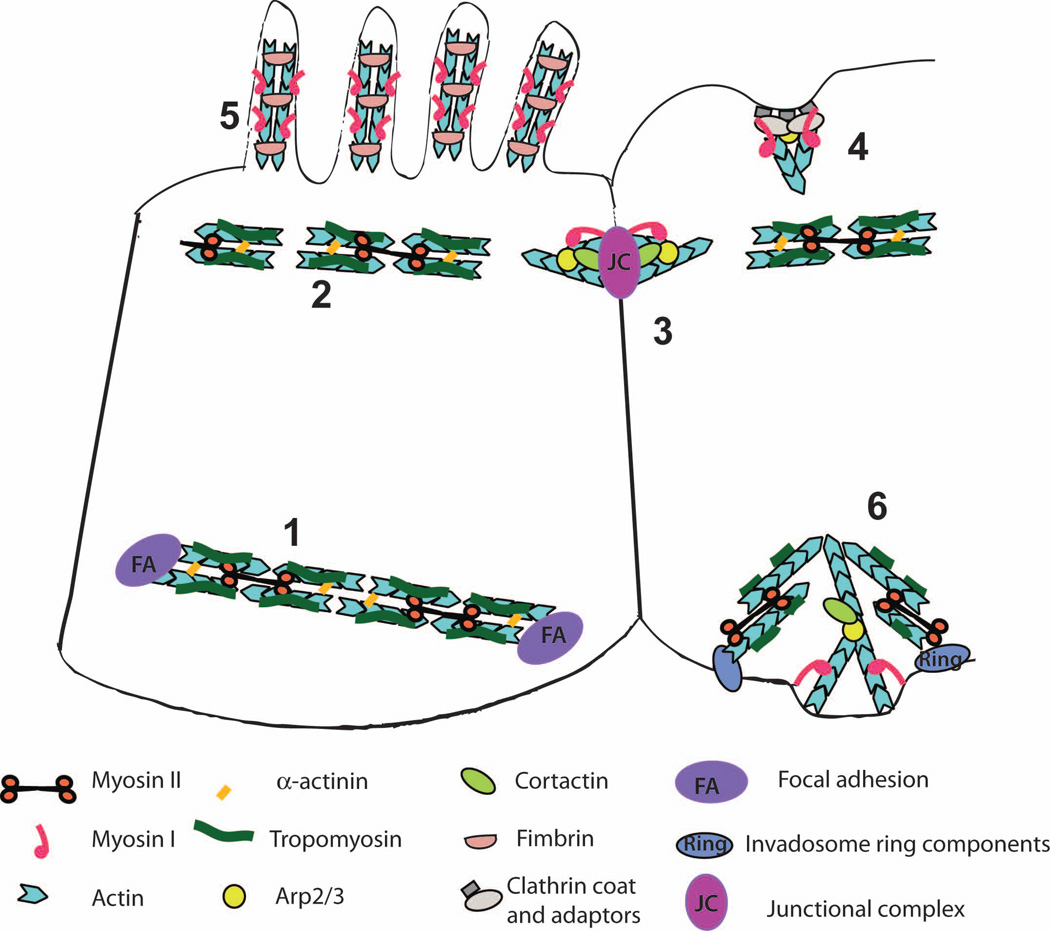Figure 1.
Organization of the actin-based cytoskeletal structures associated with myosin motors. Stress fibers (1) and apical adhesion belts (2) are composed of linear actin bundles cross-linked by alpha-actinin and associated with tropomyosin and myosin II; assembly of these structures requires the activity of formins. These are highly contractile structures that can promote elongation and maturation of focal adhesions (stress fibers) or apical constriction of epithelial cells during morphogenesis (adhesion belts). Nascent cell-cell adhesions (3) are formed following the engagement of transmembrane adhesion receptors such as cadherins on the surfaces of adjacent cells, leading to assembly of junctional complexes. Junctional complexes initiate formation of branched, Arp2/3-nucleated actin assemblies associated with myosin I and cortactin but devoid of tropomyosin. The transition from nascent cell-cell adhesions to apical adhesion belts during junctional maturation is not well understood. Actin networks assembled at clathrin-coated endocytic invaginations (4) consist of branched, Arp2/3 nucleated actin and are associated with myosin I. Microvilli (5) contain parallel bundles of actin filaments cross-linked by fimbrin that exclude tropomyosin and myosin II but are enriched in myosin I. Invadosomes (6) are specialized adhesion complexes involved in ECM degradation. Invadosome structure is especially complicated since they consist of an actin core made up of a branched actin meshwork and a ring of adhesion and adaptor proteins that surrounds the core and is associated with a more loosely organized actin cloud. This structural complexity is reflected in the diverse assortment of cytoskeletal proteins associated with invadosomes, including both Arp2/3 and formins, class I and II myosins, and tropomyosin. We have presented a hypothetical model of invadosome organization, where the core consists of branched actin networks associated with cortactin and myosin I while the ring and cables contain tropomyosin and myosin II; whether this accurately reflects invadosome organization remains to be determined.

